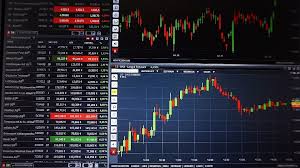
Forex trading has transformed the financial landscape, providing opportunities for individuals and businesses to profit from currency fluctuations. As one of the largest financial markets in the world, with a daily trading volume exceeding $6 trillion, Forex attracts traders from all backgrounds. Whether you’re a novice or an experienced trader, understanding the fundamentals of Forex is crucial for your success. At forex trading acev.io, we delve deeply into the mechanics of Forex trading, offering insights that can elevate your trading journey.
What is Forex Trading?
Forex trading, or foreign exchange trading, involves the buying and selling of currencies on the global market. The primary goal is to profit from changes in currency values. Unlike the stock market, which has specific trading hours, Forex operates 24 hours a day, five days a week, allowing traders to engage in transactions at any time. The market is decentralized and comprises a network of banks, financial institutions, brokers, and individual traders.
How Does Forex Trading Work?
At its core, Forex trading occurs in currency pairs, such as EUR/USD, GBP/JPY, or AUD/CAD. Each pair consists of a base currency (the first currency in the pair) and a quote currency (the second currency). Traders speculate on the direction of the currency pair, predicting whether the base currency will appreciate or depreciate against the quote currency. If a trader believes that the euro will strengthen against the dollar, they would buy the EUR/USD pair. Conversely, if they anticipate the euro weakening, they would sell.
Understanding Pips and Lots
In Forex trading, price movements are measured in pips (percentage in point). A pip is typically the fourth decimal place in a currency pair, except for pairs involving the Japanese yen, where it is the second decimal place. Understanding how to calculate pips is essential for determining profit and loss.
Additionally, trades are executed in lots, which represent the size of the transaction. A standard lot is 100,000 units of the base currency, while a mini lot is 10,000 units and a micro lot is 1,000 units. The choice of lot size impacts the potential risk and reward of a trade.
Key Strategies for Successful Forex Trading
Successful Forex trading relies on the implementation of effective strategies. Here are some popular approaches:

1. Technical Analysis
Technical analysis involves analyzing price charts and utilizing various indicators to identify trading opportunities. Traders use tools such as moving averages, Fibonacci retracements, and trend lines to forecast future price movements based on past patterns.
2. Fundamental Analysis
Fundamental analysis focuses on the economic factors that influence currency values. Traders monitor economic indicators, such as GDP growth, unemployment rates, and inflation, to assess the health of a country’s economy. News releases, geopolitical events, and central bank policies also play a significant role in currency valuation.
3. Trend Following
Trend following is a popular strategy where traders identify and trade in the direction of the prevailing market trend. This approach relies on the concept that assets in motion tend to stay in motion, allowing traders to capitalize on sustained price movements.
4. Scalping
Scalping is a short-term trading strategy that involves making numerous trades to capture small price changes throughout the day. Scalpers aim to profit from small fluctuations in currency prices, often executing dozens or even hundreds of trades within a single session.
The Importance of Risk Management
Risk management is a critical aspect of Forex trading. Implementing proper risk management strategies helps protect your trading capital and minimize losses. Here are key elements to consider:

- Setting Stop-Loss Orders: A stop-loss order is a predetermined exit point for a trade, limiting potential losses.
- Diversification: Avoid putting all your capital into a single trade or currency pair. Diversifying your portfolio can reduce specific risks.
- Position Sizing: Determine the appropriate position size based on your account balance and risk tolerance. This helps prevent over-leveraging your trades.
Tools and Resources for Forex Traders
To enhance your Forex trading experience, various tools and resources are available:
1. Trading Platforms
Choosing a reliable trading platform is crucial. Popular platforms like MetaTrader 4 and 5 offer advanced charting tools, technical analysis capabilities, and automated trading options.
2. Economic Calendars
Economic calendars provide upcoming economic events and data releases that can impact currency prices. Staying informed about these events helps traders prepare for potential market volatility.
3. Trading Signals
Many traders utilize trading signals, which are alerts generated by experienced analysts or automated systems. These signals can help guide trading decisions based on market analysis.
Conclusion
Forex trading offers a dynamic and potentially lucrative opportunity for traders willing to invest time and effort into understanding the market. By employing effective strategies, practicing sound risk management, and leveraging valuable tools, you can improve your trading performance within the Forex arena. Remember, continuous learning and adaptation are key to thriving in this fast-paced environment. Whether you’re just starting or looking to refine your skills, the world of Forex trading has something for everyone.

